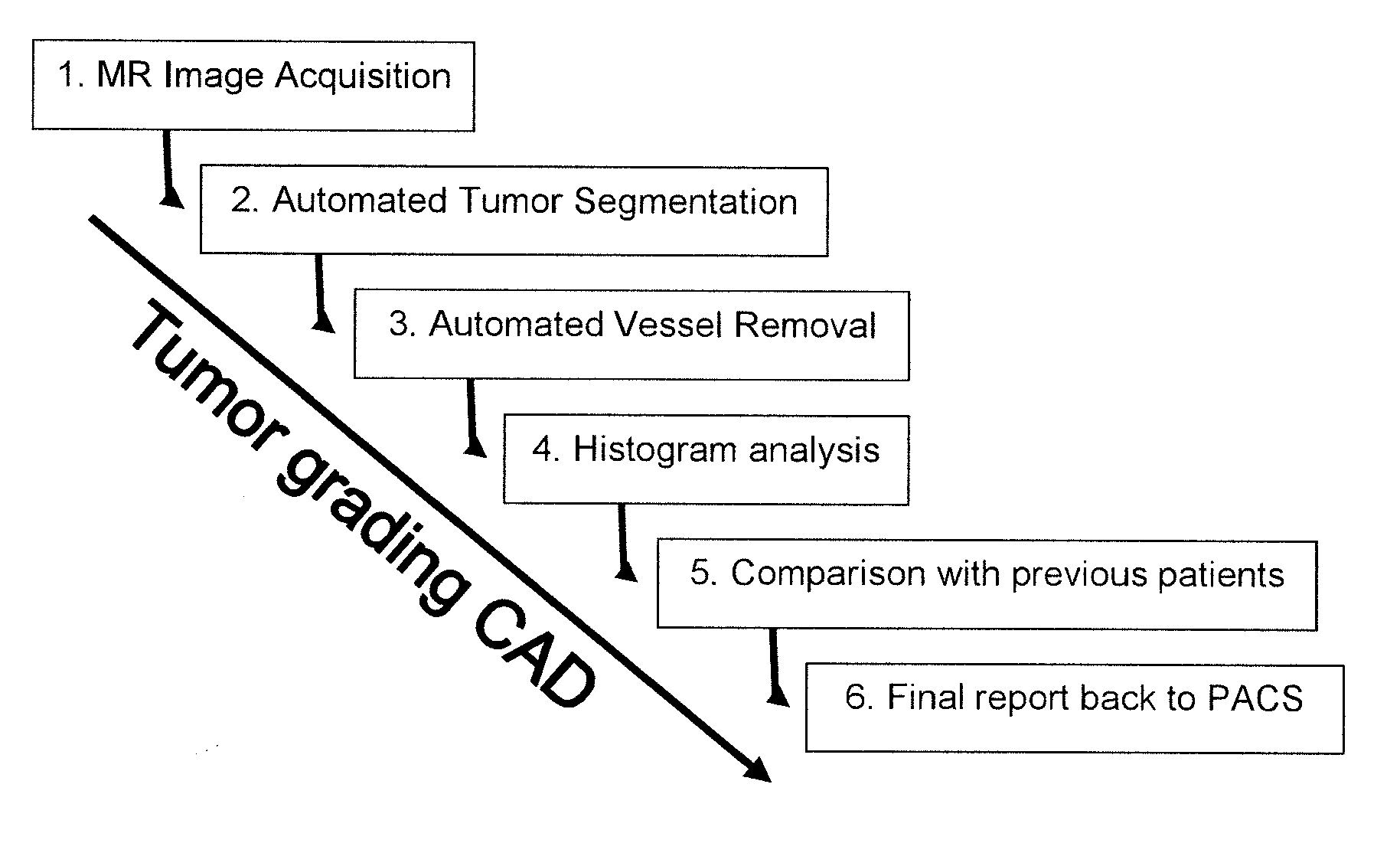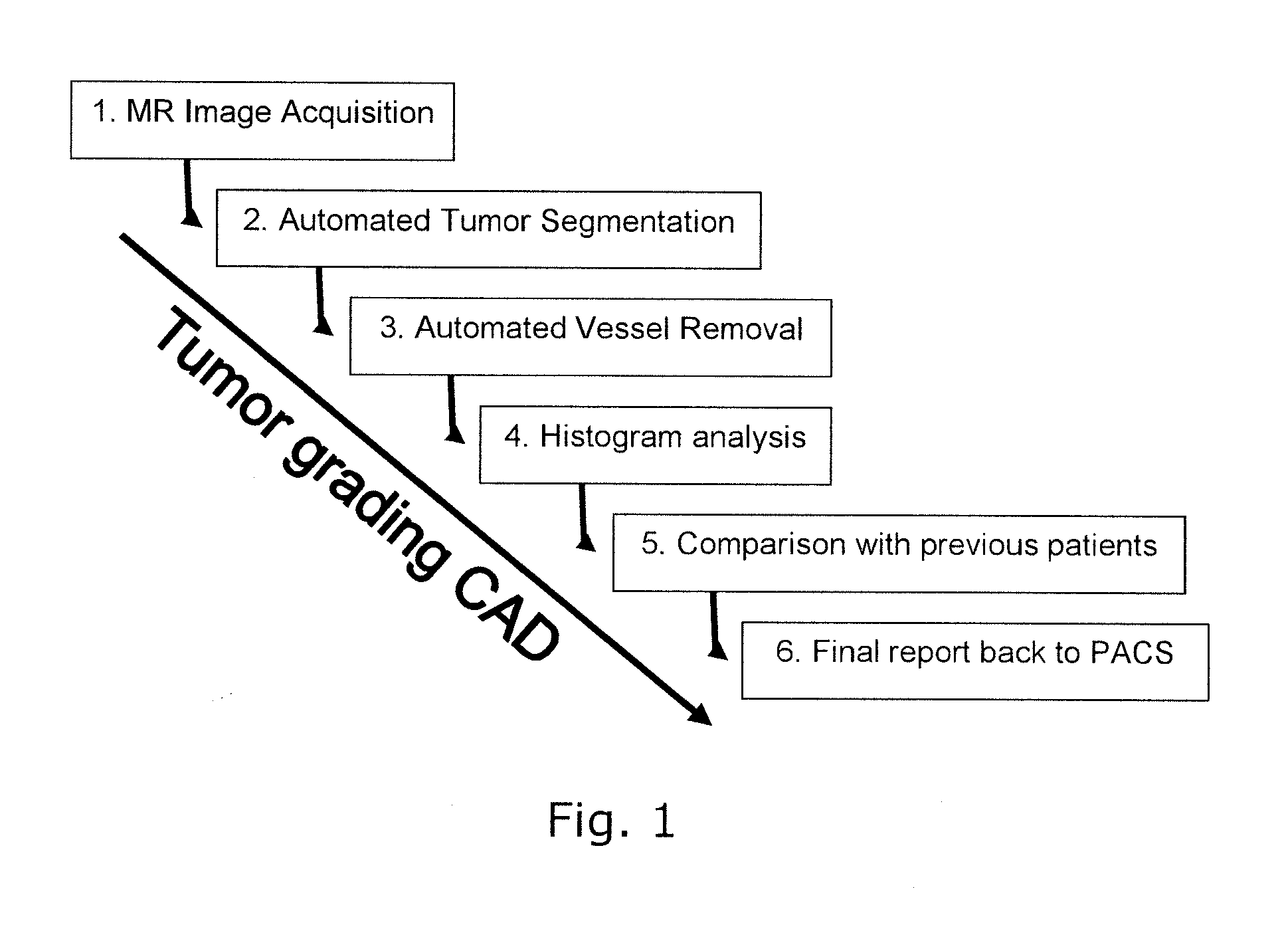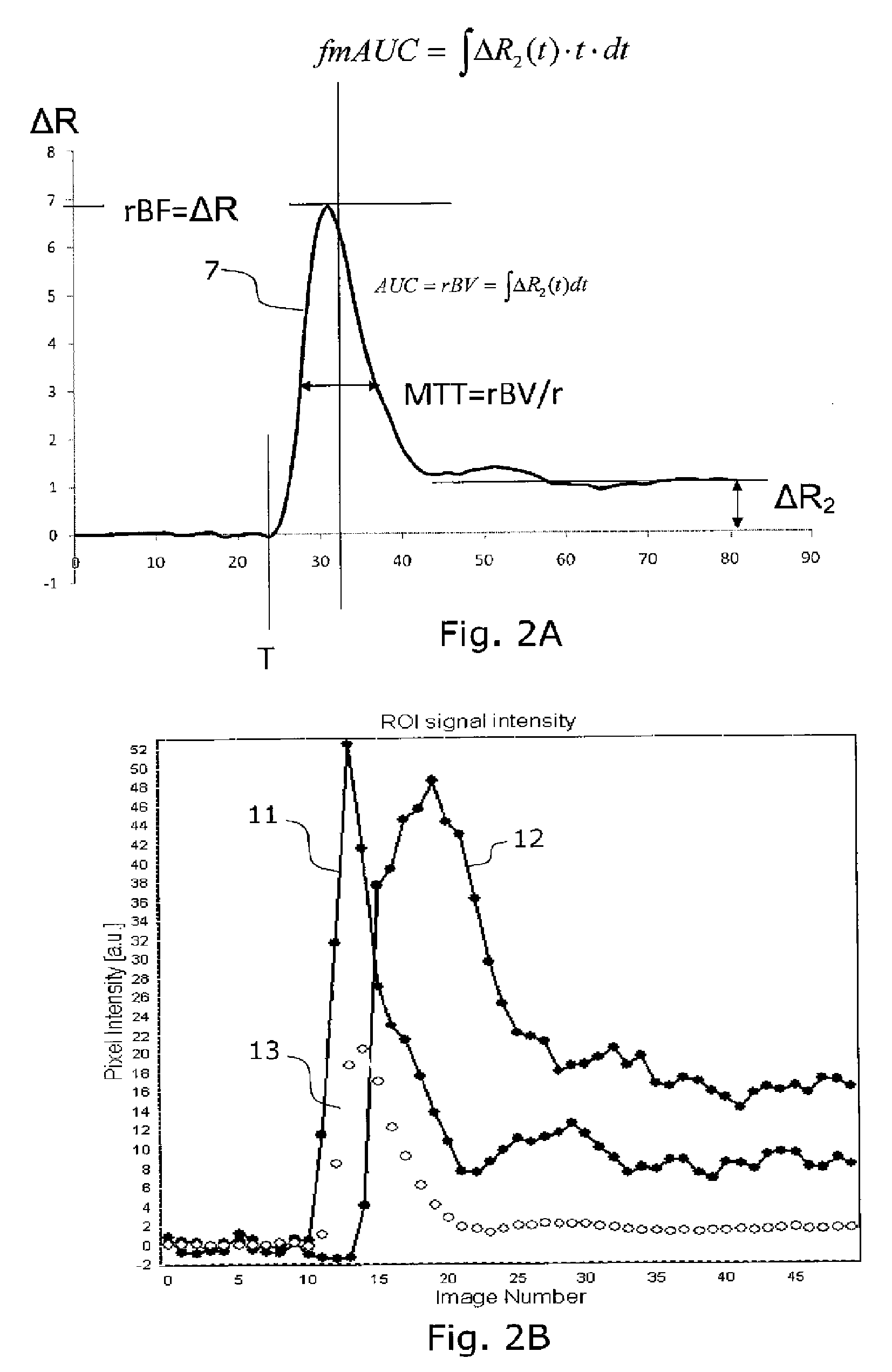Vessel segmentation in dce mr imaging
a dce and mr imaging technology, applied in image data processing, diagnostics, applications, etc., can solve the problem of misleading shift of bv frequency distribution towards higher bv values, and achieve the effect of improving the diagnostic efficacy of dce imaging
- Summary
- Abstract
- Description
- Claims
- Application Information
AI Technical Summary
Benefits of technology
Problems solved by technology
Method used
Image
Examples
Embodiment Construction
[0053]FIG. 1 illustrates the overall structure of a system or a method for computer aided diagnosis of tumors, comprising steps 1-6 as indicated.
[0054]Some common abbreviations used in the present description are:[0055]MR: magnetic resonance[0056]AIF: arterial input function[0057]ΔR2: change in transverse relaxation rate (1 / T2 or 1 / T2*) due to the presence of an MR contrast agent in the tissue of interest[0058]DCE: 0dynamic contract enhanced[0059]DSC: dynamic susceptibility contrast[0060]rCBV: relative (cerebral) blood volume[0061]nCBV: normalized (cerebral) blood volume[0062]rMTT: relative mean transit time[0063]T0: contrast arrival time[0064]ΔR2max: maximum first-pass change in T2 relaxation rate, related to tissue perfusion (rBF)[0065]fmAUC: first moment of the area under curve[0066]ΔR2p: post first-pass enhancement level
[0067]FIG. 2A illustrates definitions of different parameters or features used in the cluster analysis on a curve 7 showing an arterial input function. Such curv...
PUM
 Login to View More
Login to View More Abstract
Description
Claims
Application Information
 Login to View More
Login to View More - R&D
- Intellectual Property
- Life Sciences
- Materials
- Tech Scout
- Unparalleled Data Quality
- Higher Quality Content
- 60% Fewer Hallucinations
Browse by: Latest US Patents, China's latest patents, Technical Efficacy Thesaurus, Application Domain, Technology Topic, Popular Technical Reports.
© 2025 PatSnap. All rights reserved.Legal|Privacy policy|Modern Slavery Act Transparency Statement|Sitemap|About US| Contact US: help@patsnap.com



